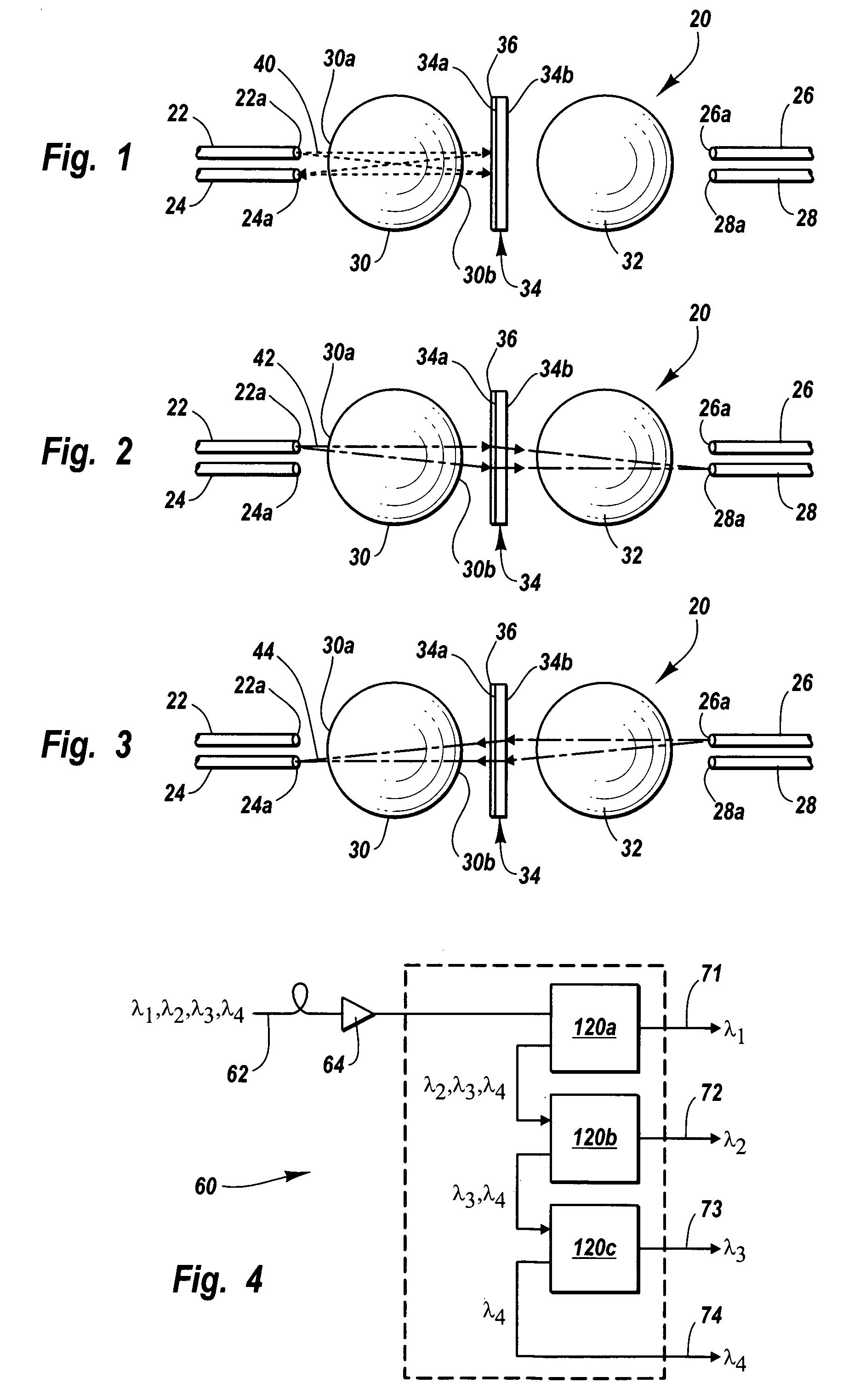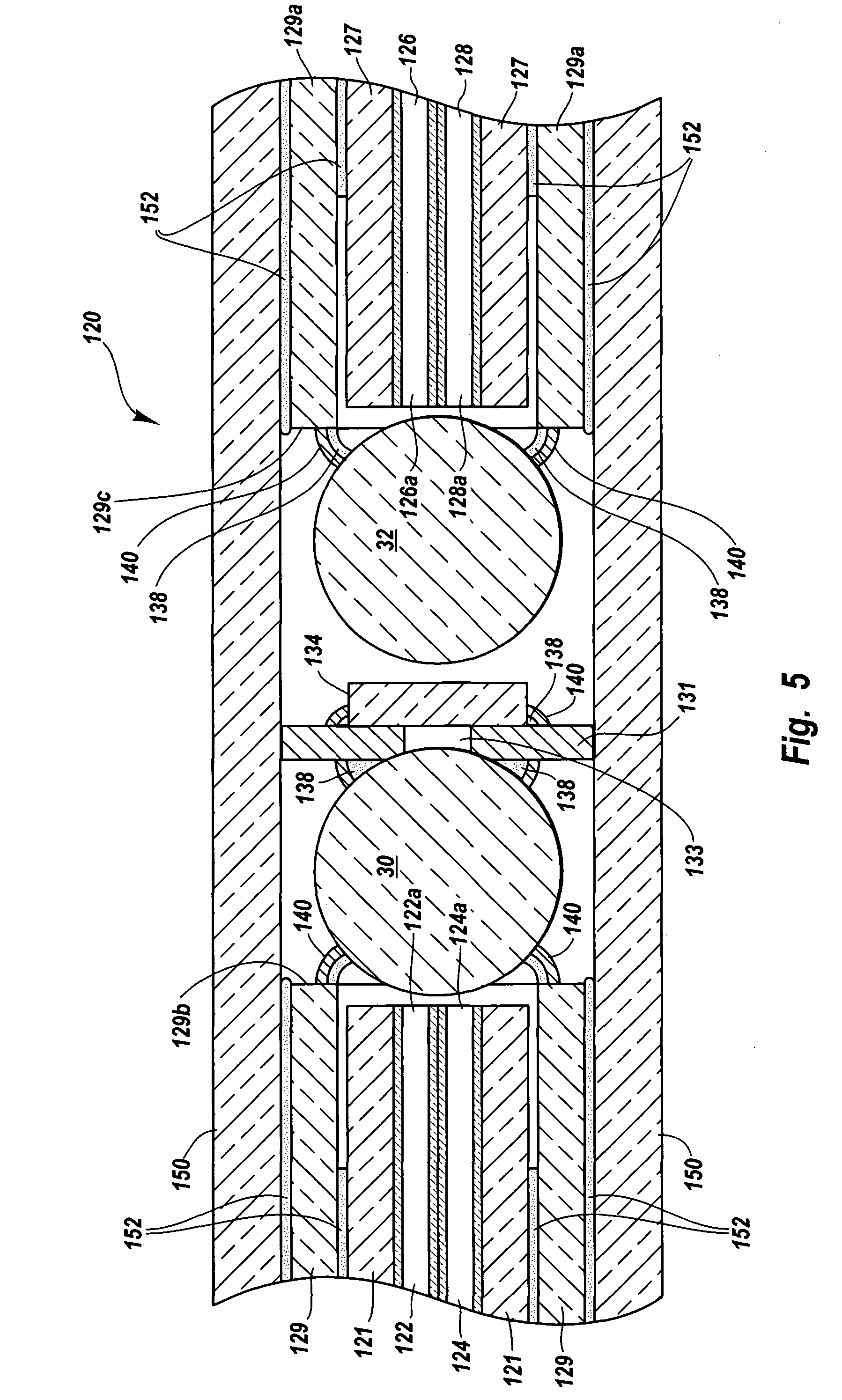Add/drop module using two full-ball lenses
a technology of add/drop module and full-ball lens, which is applied in the field of optical devices, can solve the problems of high cost of optical communication equipment having one or more grin lenses, and large beam diameter associated with grin lenses, so as to reduce the requirements of special polishing, reduce optical aberration, and reduce the effect of complexity and cos
- Summary
- Abstract
- Description
- Claims
- Application Information
AI Technical Summary
Benefits of technology
Problems solved by technology
Method used
Image
Examples
Embodiment Construction
[0025]Reference will now be made to FIGS. 1–8 to describe exemplary embodiments and configurations of an add / drop module in accordance with the invention. It is to be understood that the drawings are diagrammatic and schematic representations of exemplary embodiments, and are not limiting of the present invention, nor are they necessarily drawn to scale.
[0026]The add / drop module generally includes a pair of ball lenses to direct the electromagnetic radiation propagating through the add / drop module. By using a pair of ball lenses, the present invention reduces the requirements for special-polishing of fiber interfaces in an optical module or other optical communications device, reduces optical aberrations associated with the optical module, and reduces geometrical spot size and insertion loss while reducing the complexity of the mechanical components used to position and align a pair of half ball lenses. As used herein, the term “optical signal” includes the full range of all electro...
PUM
 Login to View More
Login to View More Abstract
Description
Claims
Application Information
 Login to View More
Login to View More - R&D
- Intellectual Property
- Life Sciences
- Materials
- Tech Scout
- Unparalleled Data Quality
- Higher Quality Content
- 60% Fewer Hallucinations
Browse by: Latest US Patents, China's latest patents, Technical Efficacy Thesaurus, Application Domain, Technology Topic, Popular Technical Reports.
© 2025 PatSnap. All rights reserved.Legal|Privacy policy|Modern Slavery Act Transparency Statement|Sitemap|About US| Contact US: help@patsnap.com



